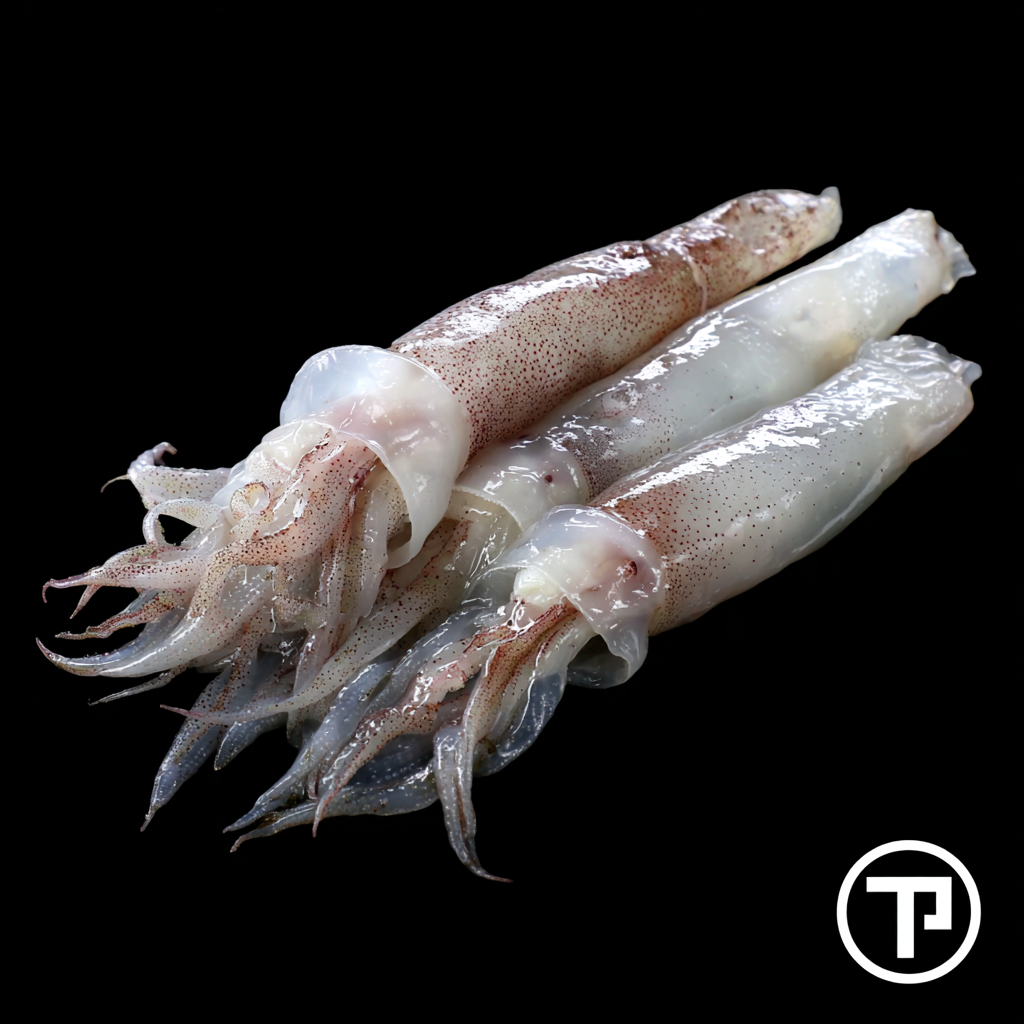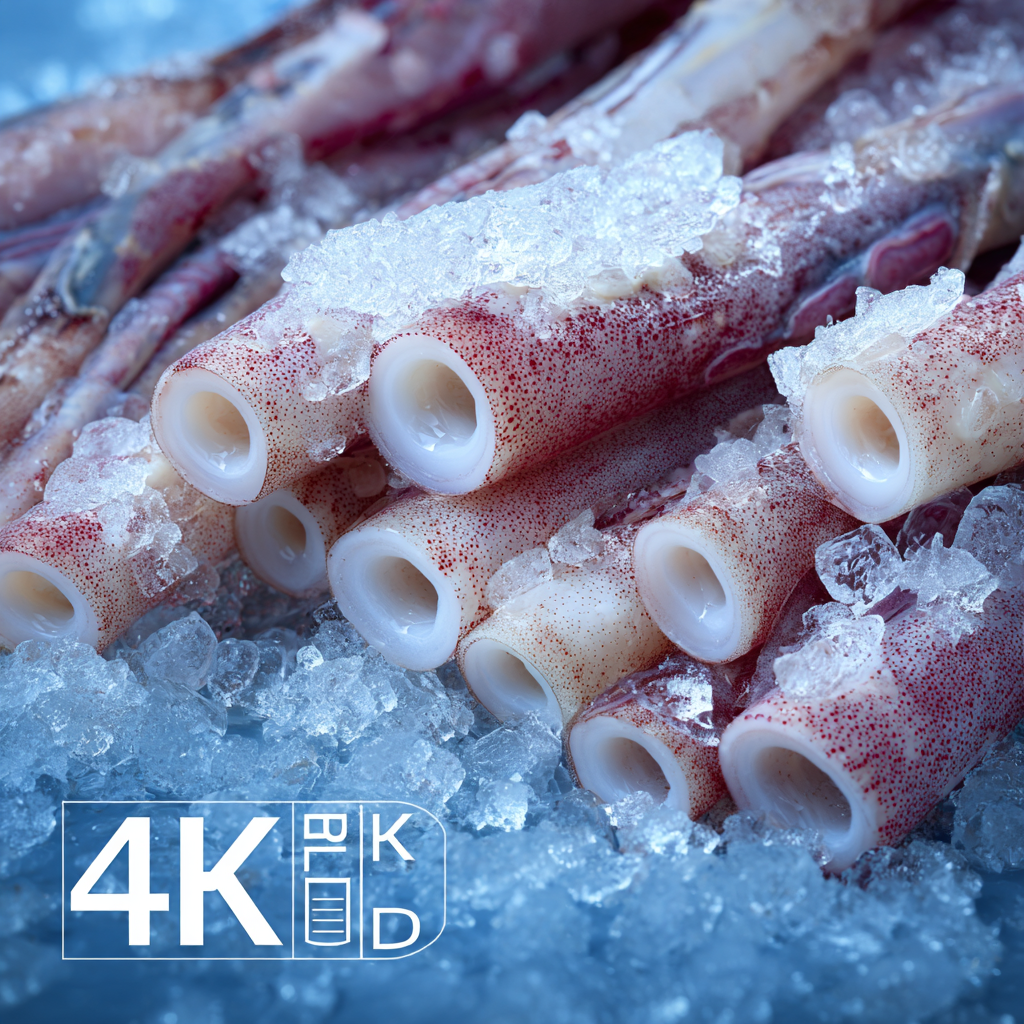The global seafood market has witnessed significant growth, with frozen seafood products like Frozen Squid Tubes gaining immense popularity among businesses and consumers alike. According to a recent report by the Food and Agriculture Organization (FAO), squid consumption has increased by over 13% in the past five years, highlighting a rising demand for high-quality frozen squid products. As the market evolves, sourcing the best Frozen Squid Tubes becomes crucial for companies looking to cater to the growing appetite while maintaining quality and sustainability. This blog will explore seven essential tips that will help businesses effectively source premium-grade Frozen Squid Tubes, ensuring they meet industry standards and consumer expectations in an increasingly competitive marketplace.

 When sourcing premium frozen squid tubes for your global business, it's essential to identify key quality indicators that can help you make informed decisions. One vital aspect to consider is the appearance of the squid tubes. Look for a bright white or light pink color, which indicates freshness. Avoid squid tubes with yellow or grayish tones, as these can be indicators of age or improper handling.
When sourcing premium frozen squid tubes for your global business, it's essential to identify key quality indicators that can help you make informed decisions. One vital aspect to consider is the appearance of the squid tubes. Look for a bright white or light pink color, which indicates freshness. Avoid squid tubes with yellow or grayish tones, as these can be indicators of age or improper handling.
Another important tip is to check for the presence of ice crystals inside the packaging. Minimal ice formation suggests that the squid has been well-frozen and maintained at consistent temperatures. Excessive ice crystals, on the other hand, can mean the product has undergone thawing and refreezing processes, affecting its quality and texture.
Additionally, reviewing the supplier's certifications is crucial. Ensure that they comply with food safety regulations and have a history of quality in their sourcing practices. Suppliers should be able to provide documentation that confirms their products meet the highest standards, further assuring you of their reliability. These quality indicators can significantly enhance your sourcing strategy, ensuring that you choose the best frozen squid tubes available for your business.
Navigating the challenges of global sourcing in the seafood industry requires a multifaceted approach, particularly when it comes to sourcing frozen squid tubes. With increasing demand for seafood and the simultaneous pressures on fish stocks, businesses must prioritize sustainable practices in their procurement processes. The Nature Conservancy emphasizes that healthy oceans stem from sustainably managed fisheries. Thus, understanding the complex dynamics of global fish production and trade is crucial for companies aiming to align with sustainability goals, especially in the context of dwindling resources and growing consumption.
Moreover, issues such as human rights due diligence in seafood procurement expose further layers of complexity. As highlighted in recent discussions, navigating these challenges requires an awareness of best practices and actionable strategies that ensure ethical sourcing. For instance, initiatives to address trade barriers and labor rights across various fishing sectors are vital for maintaining integrity in the supply chain. With insights from global market dynamics, businesses can make informed decisions that not only bolster their bottom line but also contribute positively to the health of marine ecosystems and the communities reliant on them.
As the global demand for conveniently packaged and ready-to-eat squid products continues to grow, the frozen squid market is projected to exceed $12.2 billion by 2024, with a compound annual growth rate of approximately 3.8% from 2025 to 2034. Technology plays a crucial role in efficiently sourcing high-quality frozen squid tubes, enabling businesses to streamline their procurement processes and adapt to market fluctuations rapidly. Advanced analytics and online platforms allow vendors to track supply chain dynamics, ensuring they remain competitive amid rising market prices influenced by factors like climate conditions and fishing yields.
Recent reports have highlighted a significant shortage of California squid in the market, which typically ranges from 30 to 50 grams and is a staple for various regions, especially in China and Europe. With fluctuating catch volumes significantly impacting supply chains, leveraging technology becomes essential for businesses to mitigate risks associated with sourcing, pricing, and inventory management.
Companies that invest in real-time tracking and supplier networks will not only enhance procurement efficiency but also ensure they meet consumer demands for quality and sustainability in an evolving marketplace.
When sourcing frozen squid tubes, evaluating potential suppliers is crucial for ensuring quality and reliability in your supply chain. A trusted partner should demonstrate a strong history in the seafood industry, backed by certifications such as HACCP (Hazard Analysis Critical Control Point) and ISO 22000. According to the Food and Agriculture Organization (FAO), certified suppliers are more likely to adhere to international safety standards, reducing the risk of contamination and ensuring product freshness.
Additionally, transparent communication and logistics capabilities are essential factors to consider. Suppliers should have established relationships with reliable shipping partners to maintain the cold chain, which is vital for preserving the quality of frozen seafood. As per a report by Technavio, the global frozen seafood market is projected to grow by 9% annually, emphasizing the importance of scaling your supply chain effectively with trusted suppliers. Partnering with those who can handle increased volumes while maintaining quality will be pivotal as your business expands internationally.
When sourcing frozen squid tubes for international trade, compliance with various regulations is crucial to ensure smooth transactions and maintain quality standards. Different countries have unique seafood import regulations, including documentation on health certifications, sustainability practices, and traceability. Familiarizing yourself with the requirements of the importing country can prevent costly delays and potential penalties. It’s essential to maintain accurate records of your suppliers, shipping processes, and handling procedures to demonstrate compliance and establish trust with your clients.
In addition to navigating regulations, it's important to stay updated on international trade agreements that may affect tariffs and quotas on seafood imports. Engaging with local trade authorities and industry associations can provide valuable insights into legislative changes and best practices in seafood sourcing. Furthermore, sourcing from suppliers committed to sustainable practices not only helps in compliance but also caters to a growing market demand for ethically sourced seafood. By prioritizing legal and ethical standards, businesses can ensure reliable access to high-quality frozen squid tubes that meet both consumer expectations and regulatory requirements.

